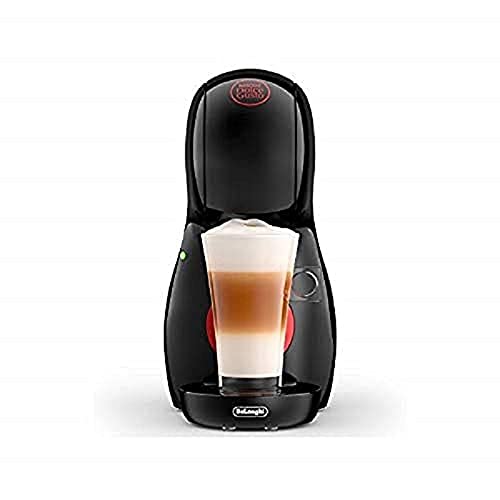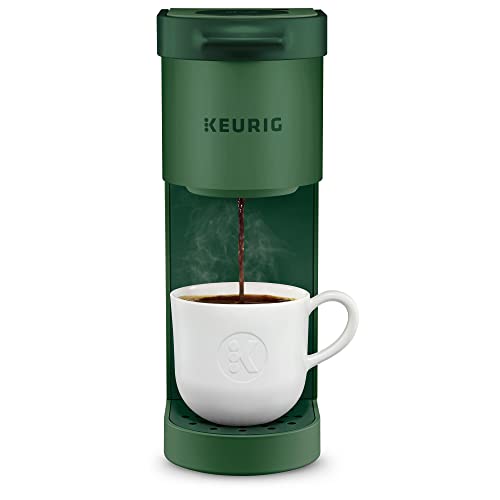Five Killer Quora Answers On Pod-Making Machines
페이지 정보
작성자 Leia Kohlmeier 댓글 0건 조회 30회 작성일 24-12-19 04:06본문
 Detergent pod-making machines (click web page)
Detergent pod-making machines (click web page)There are a myriad of pod coffee machines with pods that are available, from K-Cup (r) and Tassimo (tm) to Nespresso (tm) or Senseo(tm). Each pod coffee pods coffee machine machine works in the same way, heating water and pressing buttons.
The pod-making procedure is more complex however, it is still simple enough to make by yourself. Here are some things to keep in mind when purchasing a pod-making equipment:
Detergent Pod Manufacturing
Detergent pods can be useful, efficient, as well as green. But how do they get them? The process is surprising simple. A single-dose pod is filled with a dissolvable, water-soluble film. The film is usually made from polyvinyl alcohol, which dissolves in water and does not leave any residue on clothing. The detergent formula also includes chelating agents that soften hard water, decrease the degradation of detergents and optical brighteners for whites.
The sachets are then sprayed with seals to protect the contents from contamination and moisture during storage, transport, and use. Laundry pod makers utilize high-speed production methods to keep up with demand. They can produce between 600 and 240 pods every minute, which ensures that the products are delivered on time.
Tide manufactures some of these pods. The company uses high-quality, U.S-made ingredients, and doesn't import low-cost substitutes. It also takes steps to trace and verify the raw ingredients.
A laundry pod coffee maker maker capsule machine coffee has a product hopper which holds liquid detergent until it's needed. A precise dispenser then fills each pod to the exact amount of detergent. The machine then seals each pod. The machine's unique design safeguards the film's water solubility while routine inspections ensure 0.02ml filling accuracy.
Pod films also contain other minor ingredients, like denatonium which gives off a bad taste and helps to repel liquids. For instance, MonoSol uses Bitrex, an ammonium quaternary compound that is known as denatonium. The chemical is so bitter, it can repel people in levels as low as 0.01%. It also discourages children and pets from putting sachets in their mouths.
When you are not using your laundry pods, store them away from children and pets. Away from light and moisture prevents the ingredients from degrading quickly, while proper storage conditions can extend the time of the detergent within the pod. Always dispose of laundry pods in a proper manner after use.
Detergent Packaging of Pods
Detergent pods are a booming trend, gaining market share for dishwasher and laundry detergents and personal items like shampoo. They are a concentrated mix of surfactants, additional cleaning ingredients and a water-soluble coating. They are convenient to use, easy to store and a safe alternative to liquid detergents.
Pods are not like traditional detergent containers made of PET plastic, which could contain harmful chemicals such as 1,4 dioxane. Instead, they have an assortment of harsh chemicals, that are surrounded by a polyvinyl-alcohol layer. These chemicals can vary depending on the brand. They may include bleaches and surfactants as well as optical brighteners, solvents or enzymes. These ingredients are listed on the websites of manufacturers.
The PVA used in the film to cover the pods is biodegradable, and is listed on the Environmental Protection Agency's CleanGredients database. It also has the Nordic Swan Eco-label, which is among the most rigorous independent ecolabels. The EPA says it can be broken into natural, simple compounds that are found in soils and wastewater plants.
Laundry pods are an extremely popular alternative to liquid detergents and many brands offer various product options, ranging from basic laundry detergent to fabric softeners and stain removers. In the US, they make up 15% of household detergent sales according to a research by Nohbo.
Most pods consist of one dose of laundry detergent but some include extras such as fabric softeners, stain removers, and scent boosters. Many manufacturers also add anti-bacterial properties to the detergent to combat bacteria.
Despite their benefits Some people have complained that laundry pods aren't able to dissolve completely. This can be a result of overfilling the washer tub, using water that is cold, or by adding the pods too soon in the cycle. This could also occur if the consumer isn't aware of the instructions, since the pods need a specific temperature and pressure to dissolve.
They aren't toys, therefore users should keep them out of the reach of children. Ensure they are kept in a secure location to store them. They should also be empty before being put in the washing machine or dishwasher. The packaging that results should be recycled as quickly as possible to prevent pollution and reduce waste.
Detergent Pod Filling
Laundry pods have become an instant hit in household cleaning products, and are rapidly taking over from traditional liquid detergents. The tiny packets are easy to use, and they do not require measuring. They are also available in various sizes and strengths. Based on the kind of laundry you do you can pick between single-dose pods and multi compartment pods or even powder detergent.
The thin film that surrounds pods is crucial to their success. It must be able to hold liquids and solids that are chemically active while retaining its shape. But, it must be able to dissolve completely and rapidly in water - even cold water. Many companies have opted for the polymer PVA that offers both of these properties. The rest of the pod is a mixture of powerful bleaches, detergents and solvents. It also contains optical brighteners, preservatives, enzymes and preservatives. Typically, manufacturers list the ingredients of their detergents.
Contrary to powder and liquid detergents that are packed in high-density plastic pods are made of plant-based polymers that can be broken into smaller pieces by microbes that live in the soil or in ocean waters. Scientists from the Woods Hole Oceanographic Institution claim that PVA degrades in less than 70 days in the sewage sediments. This is significantly faster than conventional detergents, which can take hundreds of years to break down.
While laundry pods have revolutionized laundry but they do have their disadvantages. For one thing, they're more expensive than powder and liquid detergents. Plus, if you accidentally take a pod in your hands while handling it, you'll be met by a bitter taste and a chemical burn.
They're also not as versatile as conventional detergents. The laundry pods are restricted to the wash cycle listed on the packaging. This can be a problem for front-loading or top-loading washers that come with an automatic fabric softener and detergent dispensers. If your washer has an agitator, the pods might not dissolve correctly.
If you're considering trying laundry pods, speak to an area laundromat about the best coffee pod machine option for your machine and your clothes. Always read the instructions. If your clothes have streaks or spots after washing them with a pod don't add any more detergent. Never dry clothes that have been stained with detergent because the heat could make it difficult to get rid of the stains later.
Detergent Inspection of Pods
Laundry detergent pods are extremely popular due to their ability to dissolve quickly and efficiently in hot soapy water. They remove stains from most fabrics. The pods are not without controversy. Many activists call them plastic and they're a major source of litter and marine debris. Although it is true that the polyvinyl alcohol and PVOH used to create the pods are made from petroleum, the producers claim that the plastics are not as harmful as other kinds of plastics due to their biodegradation in water.
Since their introduction in 2012, laundry pods have grown in popularity. They now account for more than three-quarters of liquid detergent sales in the United US. The sachets are sold by several major brands and come in a variety of scents and colors. They're approximately the size of an ice cube. The pods are also advertised as eco-friendly with the Cleaning Institute (which represents large detergent multinationals like Procter and Gamble) arguing that the blending of detergent into a pre-measured amount results in less packaging, lighter and less emissions from shipping. The makers claim that the starches from plants in the pods as well as other natural ingredients make them biodegradable and water-soluble. in water treatment plants.
The pods could be hazardous if handled incorrectly, despite all the hype. The thin membranes that contain the detergent could easily break and cause irritation to eyes and skin. If they are inhaled they can cause poisoning from chemicals. The outer packaging that is designed to keep children away from the pods can also split at the zipper track. In September 2012, Consumer Reports called on manufacturers to make the pods safer by switching their transparent containers into opaque ones and adding latches that are child-proof. Several manufacturers responded, and some have added safety warnings.
To avoid any issues To avoid any problems, keep the pods out of reach from children, seniors and pets. Place them on a shelf or in a secure place to ensure that children don't mistake the pods as candy. Also, make sure you use a detergent compatible with the type of washer. Be aware that cold water especially when it is below 60 degrees Fahrenheit, could not dissolve the pods, causing your machine to get blocked or leave residue on your clothing.

댓글목록
등록된 댓글이 없습니다.